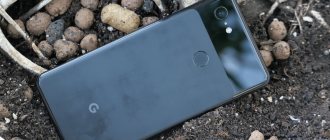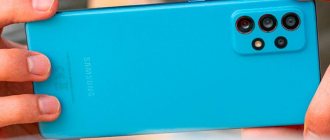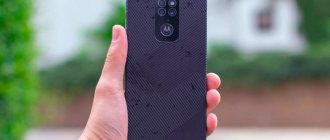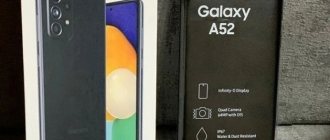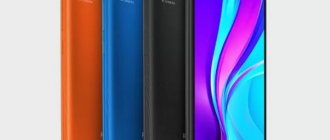After testing smartphones in the Note line from Redmi, it will be difficult to surprise me with any new device. But today we will talk about a very exciting smartphone model called Realme 8 Pro.
In this article, I will tell you not only what the smartphone looks like, but I will also share various benchmark tests, show some example photos, and also conduct battery life tests.
Of course, first of all, I want to draw your attention to the cost. So, the current price tag for Realme 8 Pro is about $260. For comparison, the previous generation Realme 7 Pro will cost you $273. Therefore, I have a number of unclear questions, which you can find out about in the detailed review below.
Realme 8 Pro with 48% discount
★★★★★
$259,99
$499,80
Buy
Aliexpress.com
But now, I propose to go through the main features of the new 8 Pro model. The first thing that makes the device stand out is the same 6.4-inch screen and the same Super AMOLED matrix. In addition, the device received an absolutely similar Snapdragon 720G processor. Also the amount of memory remained untouched.
The main differences between Realme 8 Pro and 7 Pro are the updated 108-megapixel main camera module. Meanwhile, the previous generation had 64 megapixel resolution. At the same time, the battery capacity remained identical for both generations - 4500 mAh, but fast charging for the updated version was reduced from 65 to 50 W.
Therefore, I propose to start an in-depth and detailed review to understand whether it is worth buying the new generation of the mid-budget class Realme smartphone or not?
Realme 8 Pro: Specifications
| Realme 8 Pro: | Characteristics |
| Display: | 6.4 inches Super AMOLED with a resolution of 1080 x 2400 pixels, 60 Hz |
| CPU: | Snapdragon 720G 8 cores 2.3 GHz |
| GPU: | Adreno 618 |
| RAM: | 6/8 GB |
| Inner memory: | 128 GB |
| Memory card: | Up to 256 GB |
| Cameras: | 108MP + 8MP + 2MP + 2MP main camera and 16MP front camera |
| Wireless connections: | Wi-Fi 802.11 a/b/g/n/ac, dual-band, 3G, 4G, Bluetooth 5.1 and GPS |
| Battery: | 4500 mAh (50 W) |
| OS: | Android 11 (Realme UI 2.0) |
| Ports: | Type-C |
| Weight: | 176 grams |
| Dimensions: | 160.6 x 73.9 x 8.1 mm |
| Price: | $259 |
Design
Extravagant matte or strict glossy
I got my hands on a smartphone with a matte blue back. When exposed to any light, purple tints appear on the lid - the combinations are very beautiful. Also attracting attention are the large glossy letters that make up the Realme slogan. They are pressed into the lid and add tactile sensations. The brand logo is applied in exactly the same way.
The surface of the back cover is matte and slightly rough. Fingerprints and small scratches are not visible, the grip is excellent.
As an alternative, a black gloss without an inscription is offered, but with a similar circular gradient. This option looks much stricter and, for my taste, more boring. However, we can only praise such a different alternative; everyone will find their own option.
The frame is made of smooth plastic, and the display is slightly raised on an additional black frame - all this is the result of the Realme 8 Pro belonging to the middle segment. Unexpectedly for Realme, the power button and volume rocker are on one side, on the left side.
In terms of dimensions, our hero has become slightly more compact than the previous model with the same diagonal and battery capacity, thanks to which it fits well in the hand. The effect is colossal, especially noticeable is a thinning of up to 8.1 mm and a lightening of up to 176 grams, although in terms of numbers the difference is not at all great.
Out of the box, a film is applied to the screen, and the kit includes a slightly tinted silicone case. It has a side that saves the camera block protruding by 3-4 millimeters.
Unpacking and packaging
The updated version of the Realme 8 Pro smartphone comes in a typically bright yellow package. On the front of the box there is only the name of the model and company. But on the back of the package the main features and technical characteristics are described.
Inside the package, I found the device itself, a protective silicone case, various instructions, a 65 W power adapter and a Type-C charging cable. It's also worth noting here that fast charging only supports 50W power, not 65W.
In general, I didn’t notice anything special, since the previous generation of the 7 Pro smartphone had exactly the same equipment. Therefore, I propose to start our conversation about the appearance and how well the device is assembled.
Battery
The battery capacity of the new products is almost identical: 4500 and 5000 mAh, respectively. Moreover, the younger model has a better battery. However, in practice there is practically no difference. Both devices can easily last a whole day on a single charge with active use. Yes, Realme 8 owners will gain an hour or two of battery life due to the extra 500 mAh, but this is not that significant.
But the difference in charging power is noticeable. For the top member of the family, it is 50 W, which allows it to fully replenish its resources in 47 minutes. Realme 8 has an identical indicator of 30 W and goes from 0 to 100% battery in 65 minutes.
Design, build quality and materials
Since the Realme 8 Pro smartphone belongs to the mid-budget class of devices, it would be unnecessary to expect premium materials in its design. Like the previous generation 7 Pro, the new generation is made of plastic. But I can assure you that the quality of the plastic is quite high and cannot be compared with the plastic used on more budget smartphone models.
Apart from this, I did not find any major problems with the build quality. That is, the device was assembled without any comments and had no extraneous creaks or sounds during my testing. But I found no information about water or splash protection. Therefore, if possible, it is better not to use the device in a humid environment.
The back of the 8 Pro smartphone has received global design changes compared to the previous generation 7 Pro. For example, now the camera module is made on a square island, and not in a rectangular one, as it was before. Also on the new model of the device there is a rather large slogan - Dare To Leap. For those interested, this slogan means that you shouldn’t be afraid to take the first step forward.
Meanwhile, on the right side of the smartphone there is the usual power button and volume rocker. But on the opposite side there is a slot for two nano SIM cards and a separate slot for a MicroSD memory card. I am very glad that Realme left a combined slot for two SIM cards and a memory card.
But on the bottom edge of the device there is the main speaker, a Type-C port for charging, a hole for a microphone and a headphone jack. At the top end of the smartphone there is only one hole for an additional microphone. Yes, I would like to see a second speaker for stereo sound, but unfortunately it is not available here.
However, the sound quality of the main speaker was not the worst. During my testing, the sound was really loud and quite clear. Despite the fact that there is only one speaker. I was also pleased to see a separate headphone port. Therefore, you can enjoy your favorite music even through wired headphones.
You may ask me, where is the fingerprint scanner located? Yes, indeed it is not on the device body, since it was installed under the smartphone screen. This is an optical sensor that didn't perform well during my testing. For example, the finger was not recognized the fastest, and not the first time. Although the facial recognition performance was good and therefore it is better to use this particular protection than the fingerprint scanner.
Another thing I would draw your attention to is the dimensions and weight. The new model of the 8 Pro smartphone from Realme has dimensions of 160.6 x 73.9 x 8.1 mm and weighs only 176 grams. This is a really compact and fairly lightweight smartphone that was comfortable to manage and use. For comparison, I will leave the dimensions of the previous generation 7 Pro, which received 160.9 x 74.3 x 8.7 mm and weighed 182 grams. That is, from this we can conclude that the device has decreased slightly in weight and thickness. In addition, the length and width also decreased slightly by 0.5 mm on each side.
Equipment and appearance
The equipment for both models is standard. Smartphones come with a protective film glued to the screen, a Type-C cable, tools for removing the tray, silicone cases, documentation and power supplies. In the case of Realme 8, its power is 30 W. Proshka's is more impressive - 50 W.
In terms of design, the devices do not offer anything new. Like all mid-budget devices in the first half of 2022, they have a display in front with thin frames and a neat cutout for the front camera in the upper left corner. Apparently, this design will be used by manufacturers until sub-screen front cameras come into use.
There are no differences in the design of the back either. Both models have the inscription Dare To Leap in large letters - the official slogan of the brand, as well as a square block of the main camera.
You will be surprised, but the layout of the gadgets’ controls is identical. On the right side there is a volume rocker and a power button. On the opposite side there is a full-fledged triple tray. At the very bottom, the most interesting things are the minijack, speaker and Type-C port.
By modern standards, the devices turned out to be quite neat in size. They can be used with one hand, but you cannot do without interceptions when trying to reach the top of the screen.
Considering modern trends, the lack of any moisture protection on both devices is confusing. Let's wait for the first reviews of Realme 8 to understand whether the Russians will be so annoyed by this fact. However, it is already clear that the device must be kept away from water.
Screen and image quality
As I already mentioned at the beginning of the review, the new Realme 8 Pro model has a similar screen as the previous generation 7 Pro. This is a 6.4 inch screen with Full HD resolution or 1080 x 2400 pixels. At the same time, the pixel density per inch was 411 PPI, and the aspect ratio was 20:9.
I really like Super AMOLED screens, especially when it comes to their image quality. In the case of the 8 Pro model, I liked the rich and bright screen picture. Even in sunny weather you will not have problems with readability, since the maximum brightness level is 1000 nits.
As for the usable area occupied by the screen on the front of the device, the value was 83.3%. Yes, the usable area has increased slightly compared to the previous generation, in which this value was 82.7%.
This is not much, but from this we can conclude that the company has something to strive for. Indeed, the frames around the screen are not the thinnest, especially the lower chin. Also at the top of the screen on the right side you can see a round cutout for the selfie camera.
In Screen Settings, you can select typical display settings. For example, you have the option of choosing a light or dark theme. You can also make the screen with warmer or cooler shades of colors. Of course, there is an Always-On Display function, since the screen is built on a Super AMOLED matrix.
⇡#Display and sound
realme 8 Pro has the same display as realme 7 Pro: it uses a Super AMOLED matrix with a diagonal of 6.4 inches and a resolution of 2400 × 1080 pixels (density 411 ppi). At the same time, its refresh rate is low - 60 Hz, and this is a little unexpected: today, releasing a smartphone even in the mid-price category without a high-frequency mode seems like a small challenge. Last year's realme 6 Pro had a 90-Hz mode, albeit on an LCD screen.
The matrix itself is normal - viewing angles are free, the picture is juicy. Oleophobic coating is of high quality.
The measured maximum brightness level without software enhancement during auto-adjustment is 501 cd/m2 - an excellent result for an OLED display.
In the display settings, you can change the font size, activate the blue filter, change the color temperature, and activate the system for displaying the clock and notification icons on a locked smartphone. There is also one that expands the color gamut of the original image, “thinking out” the colors using a machine learning system - it can be turned off if desired, although I did not notice a serious impact on the picture. There are three color presets: “gorgeous,” “vivid colors,” and “subtle.” By default, the smartphone is set to bright mode. I measured the color rendering of the realme 8 Pro screen in Vivid and Subtle modes. If desired, you can separately adjust the color temperature for each of them.
realme 8 Pro, gamma in bright color mode. Yellow line – realme 8 Pro performance, dotted line – reference gamma
realme 8 Pro, color temperature in Vivid color mode. Blue line – realme 8 Pro performance, dotted line – reference temperature
realme 8 Pro, color gamut in Vivid color mode. Gray triangle – DCI-P3 coverage, white triangle – realme 8 Pro coverage
In Vivid mode, the color space is roughly DCI-P3, as promised in the settings menu. The average gamma of gray shades is not far from the norm - 2.29 with fairly stable curves. The color temperature is increased - ranging from 7,000 to 8,000 K. The average deviation DeltaE for the extended Color Checker palette (grayscale + a wide range of color shades) is 3.78 (with a norm of 3 and a reference value of 2), which is not so Badly.
realme 8 Pro, gamma in delicate color mode. Yellow line – realme 8 Pro performance, dotted line – reference gamma
realme 8 Pro, color temperature in delicate color mode. Blue line – realme 8 Pro performance, dotted line – reference temperature
realme 8 Pro, color gamut in delicate color mode. Gray triangle – sRGB coverage, white triangle – realme 8 Pro coverage
In the “tenderness” mode, the sRGB color space has already been declared - and the color gamut approximately corresponds to the application, albeit with a slight deviation. Gamma remains almost unchanged - 2.30. Temperatures are warming up, approaching the reference value of 6,500 K, but still not reaching it - on average it is 7,000 K. The average DeltaE deviation for the extended Color Checker palette is getting worse - 4.35. Yes, the picture in this mode is really warm and “tender”, but it does not become more accurate. Our advice is to leave the default mode, adjusting the color temperature a little.
A very strange thing happened with the sound capabilities of the realme 8 Pro - the smartphone suddenly lost the stereo speakers that were present on both the realme 6 Pro and the realme 7 Pro. Why the new generation device received a mono speaker when positioned in the same class is unknown. Otherwise, everything is the same as in humans - there is a mini-jack with an acceptable acoustic channel, there is support for key Bluetooth profiles (LDAC, aptX, aptX HD).
Performance, benchmark tests, games and OS
A similar situation affected the performance of the new generation of the Realme 8 Pro smartphone. This model uses exactly the same Snapdragon 720G processor as the previous generation 7 Pro.
I can't say that this is a bad chipset, but as for a new generation device, I would like to see a slightly improved version of the processor here. But despite this, the use of the Snapdragon 720G chipset showed good results in various benchmark tests. The processor is based on 8 nanometer technology with a maximum clock speed of 2.3 GHz.
Yes, below I will leave an album with various tests, such as AnTuTu, GeekBench 5 and others, so that you can evaluate the scores with your smartphone or its main competitors. In real life, the device worked quite quickly and stably.
The same applies to games, since the Adreno 618 graphics accelerator shows good results in its work. For example, I was able to run quite demanding and heavy games such as PUBG Mobile, Call Of Duty and others. After one hour of testing the GPU, I was left with positive emotions. However, I did not notice any overheating and the device itself was within operating temperature.
I should also note the amount of memory that also remained untouched on both versions of the device. The new generation uses 6 or 8 GB of RAM and 128 GB of internal memory. But the internal memory technology remains the same - UFS 2.1. Therefore, the speed results also did not change - this is about 500 MB/sec read speed and 200 MB/sec write speed. But what I was very happy about was the presence of a separate slot for a memory card.
For wireless communication, the Realme 8 Pro model uses a dual-band Wi-Fi ac module, Bluetooth 5.0 version, GPS with a triple A-GPS network, GLONASS, BDS. And the most important feature is the presence of an NFC module for contactless payment.
The 8 Pro smartphone runs on Android 11 operating system with Realme UI 2.0 user interface. The operating system works without any problems, the function is processed quickly and lightning fast. Since this is a global version of the user interface, you will not have problems with Google services and available languages.
But I would like to point out that this is a 60Hz screen, not 90 or 120Hz. Therefore, you will not get such fast and smooth performance from the 8 Pro model. This is when compared with other competitors. I think that you should understand and take this fact into account when buying a new smartphone.
Communication and Internet
The communication interface is the same in both cases. Smartphones are equipped with dual-band Wi-Fi, Bluetooth 5.1, NFC, as well as a GPS module for setting location.
It is clear that the gadgets stably receive mobile communications signals in the 4G LTE bands, so there will be no problems with this.
Camera and sample photos
The main difference between the Realme 8 Pro and 7 Pro generations is the main and front camera. If the main sensor has become a little better in terms of detail, then the selfie camera has slightly worsened its performance. So let's talk about cameras in a little more detail.
The main camera module of the Samsung S5KHM2 has a 108-megapixel resolution with an f/1.89 aperture. Let me remind you that the previous generation had a sensor with a 64-megapixel resolution and an f/1.79 aperture. Yes, perhaps the detail of the new sensor has become better, but the night shots were of better quality on the 7 Pro model.
The rest of the main camera sensors remain unchanged. For example, the second camera module received 8-megapixel resolution for ultra-wide shots. But the third and fourth sensors have a 2-megapixel resolution and were created for macro and bokeh shots.
Okay, now let's find out what changes the front camera has received on the new 8 Pro model. Here I see that the selfie camera has received a resolution of 16 megapixels. Yes, perhaps - this is not the worst sensor. But the last generation 7 Pro had a resolution of 32 megapixels.
Among other features, I can highlight the maximum video resolution of 4K and 30 frames per second on the main camera module. But the front camera is capable of shooting video with a maximum resolution of 1080p from 30 to 120 frames per second. At the same time, both cameras received the gyro-EIS image stabilization function.
Camera
Realme 8 and Realme 8 Pro have similar sets of modules - a main sensor, an ultra-wide sensor, a macro sensor and a depth sensor. The only difference between the cameras of the devices is the resolution of the main module. In the case of Realme 8 it is 64 MP, while the Pro has a 108 MP sensor.
Despite the difference in numbers, in practice the pictures look absolutely identical. Especially considering the fact that both devices take pictures at 12 MP by default. The frames are detailed, noise-free, with excellent contrast and vibrant colors. In short, for mid-budget people they shoot great models.
Photos taken with the 8-megapixel ultra-wide lens are not as impressive. They noticeably lack detail due to the aggressive operation of the noise reduction algorithms. While the contrast is within acceptable limits, the dynamic range could be wider. The colors, in turn, give off too much shades of red.
The macro module has a fixed focus of 4 cm, so it is almost impossible to take a cool and sharp picture with it. Even in the best case, the photo will be overly soft, dull and full of noise.
But the portraits of the new products are successful. Thanks to the additional module, the separation of object boundaries occurs with filigree precision, and the blurred background looks adequate and not too artificial.
The 16 MP front camera is very demanding on lighting, but is still very good. The photographs are contrasting, with vibrant colors and good detail.
Battery and operating time
Considering that the Realme 8 Pro smartphone does not have the largest screen size. In addition, this screen is AMOLED and has a 60Hz refresh rate, so there shouldn't be much power consumption here.
Indeed, as my practice has shown, the device can operate on a full charge for up to 2 days of active use. If you look at the Work 2.0 Battery life test, the smartphone showed a result of almost 15 hours with the screen on. This is truly an excellent indicator for the 4500 mAh capacity of the built-in battery.
Another bonus for me was the presence of fast charging with a power of 50 W. Therefore, from 11 to 100%, the smartphone was charged in just 39 minutes. This is a very excellent result. At the same time, exactly the same battery capacity was used in the previous generation. Okay, now let me share my opinion about the new smartphone model from Realme.
⇡#Autonomous work
The battery in realme 8 Pro costs the same as in the “seven” – 17.1 Wh (4500 mAh, 3.8 V). Taking into account the energy-efficient hardware platform and OLED screen, this allows you to count on good battery life. However, nothing supernatural: you need to charge your smartphone strictly once a day, at least - but, most likely, not more often. Even under extreme load (continuous use), the charge should last for 8-9 hours.
In our test with Full HD video playback at maximum brightness, with Wi-Fi turned on and auto-update, realme 8 Pro lasted 14 hours - the result is not a record, like that of realme 7 Pro (why such a difference is not clear), but at least good .
The smartphone comes with a 65 W charger - it charges the device’s fairly large battery in less than an hour (47 minutes to be exact - I can confirm the time stated in the advertisement).
Price and where to buy cheaper?
The official price for Realme 8 Pro was $259.99 with a 48% discount. Yes, definitely, I can recommend the new model from Realme for purchase.
But I will also leave other competitor options that may surprise you even more. Therefore, pay attention to alternative smartphones in the section below.
Realme 8 Pro with 48% discount
★★★★★
$259,99
$499,80
Buy
Aliexpress.com
Speaker, sound quality
Realme 8 and Realme 8 Pro are equipped with single speakers, so they have nothing to excel in terms of sound. A mono speaker is good for watching a video or listening to a voice message from a friend, but listening to music through it is such a pleasure. The sound is too flat due to lack of bass.
I'm glad that the models have a mini-jack that allows you to connect headphones to them via wire. For more advanced users, there is support for aptX HD codecs when connected via Bluetooth.
Bottom line
Based on the tests, Realme 8 Pro is primarily created so that the Chinese company finally has a smartphone with better cameras. In all other respects, it is almost no different from last year's Realme 7 Pro. Of course, we get a thinner and lighter body, but for some reason charging has become slower, and the hardware remains unchanged.
Is it worth buying?
However, overall the 8 Pro still manages to be a good and affordable model in the mid-range segment. The smartphone costs from 20 thousand rubles, like Realme 7 Pro and Realme 7 5G. But, I advise you to choose a newer model, even for the 108-megapixel camera.
The main competitor of Realme 8 Pro is Redmi Note 10 Pro. It has the same 108MP camera from Samsung, but a more powerful processor and a high refresh rate AMOLED display. At the same time, it costs the same money as the new device from Realme.
Yandex Market
Realme 8 Pro on AliExpress
Software
Realme 8 Pro also became the company's first smartphone for the international market with the Realme UI 2.0 shell on top of Android 11.
Version 2.0 introduced more interface settings. You can change the size and style of icons, animations when unlocking through the fingerprint scanner, the appearance of the notification panel, color schemes and much more. There are also many of the basic Android 11 features: multi-app playback control via the notification panel and a system-wide dark mode.
Other features include one-handed mode and Smart Sidebar. The latter allows you to quickly open selected applications or functions. The Cloning option also remains - for transferring data and contacts from the old device. All this contributes to a pleasant experience with Realme UI.
Component Performance
One of the main disappointments of the Realme 8 series relative to the Realme 7 series is the same processor. The Realme 8 Pro uses the now aging Qualcomm Snapdragon 720G processor.
SD 720G can be seen in Vivo V20, Samsung Galaxy A52 and A72. I don't want to say that this is a bad processor, but switching to 730G and 732G would be more logical.
In performance tests, Realme 8 Pro performs about the same as other models in this price segment. Geekbench 5 gives us a score of 1678 in multi-core mode. This is slightly better than the Vivo V20 and Pixel 4a 5G, but inferior to last year's Realme 7 Pro.
There are no problems with everyday use, however, there are slight lags from time to time. The gadget is also good for games; it can handle PUBG Mobile on medium settings. Yes, you shouldn't expect incredible graphics and high frame rates, but you can play it.





